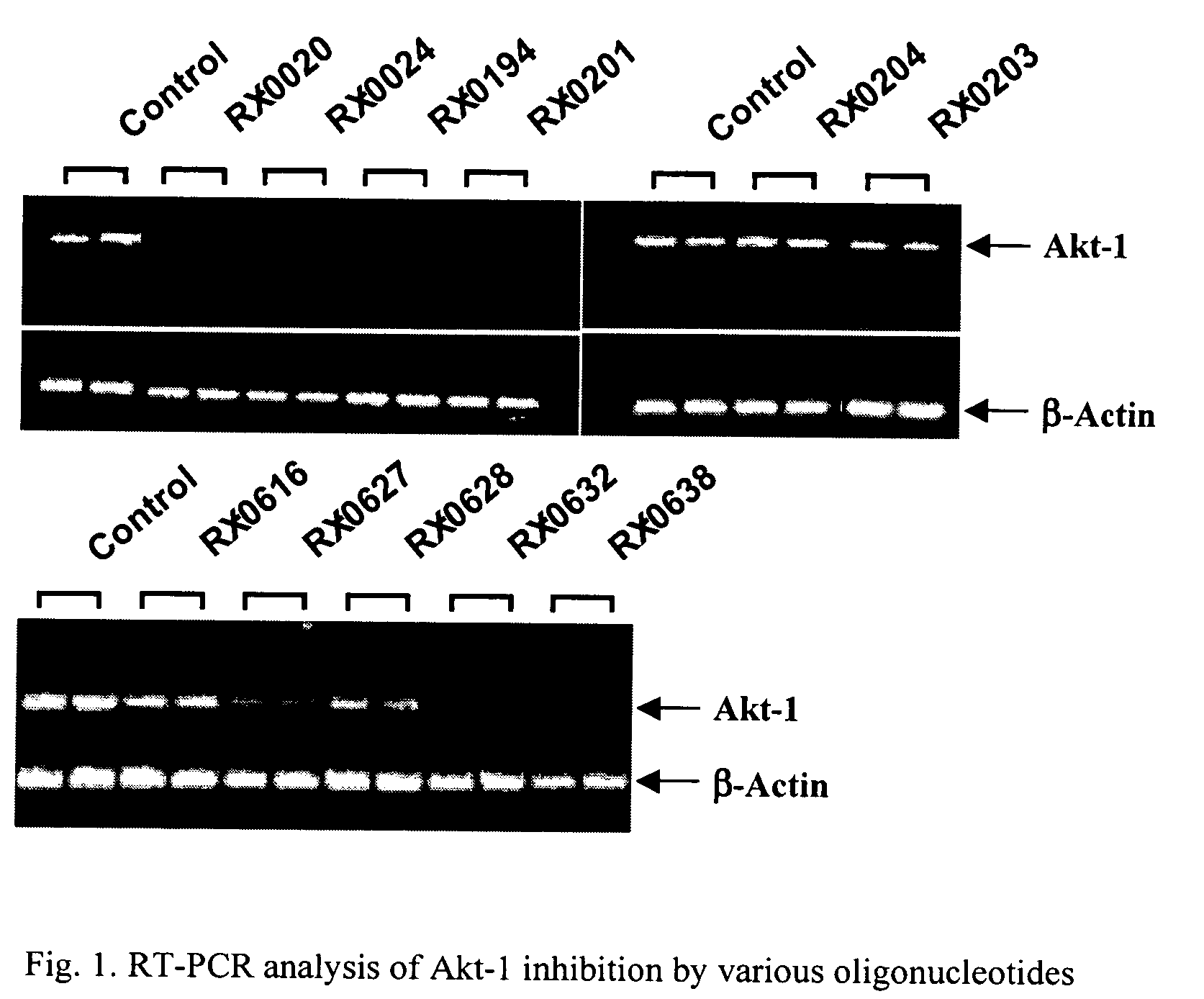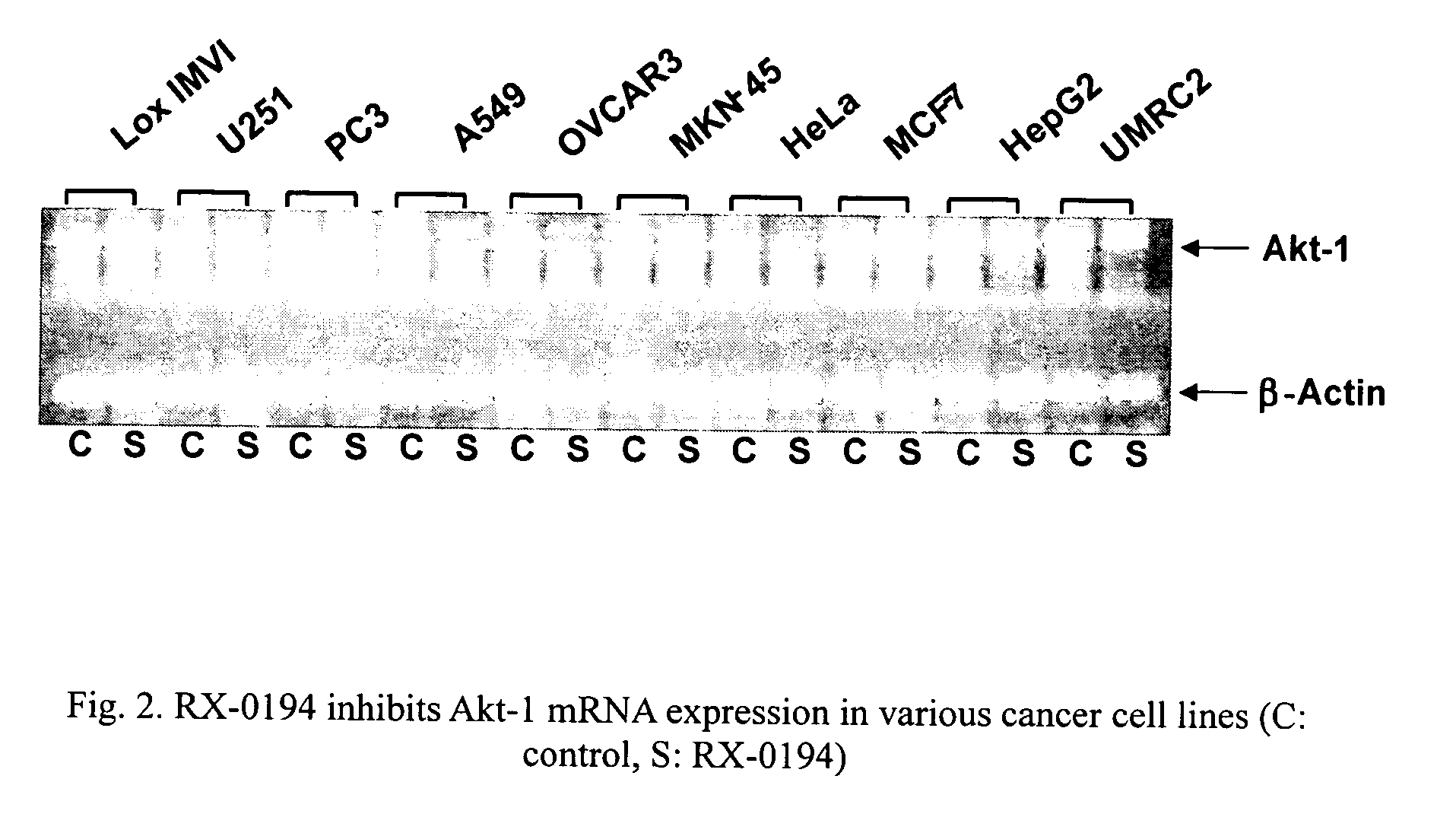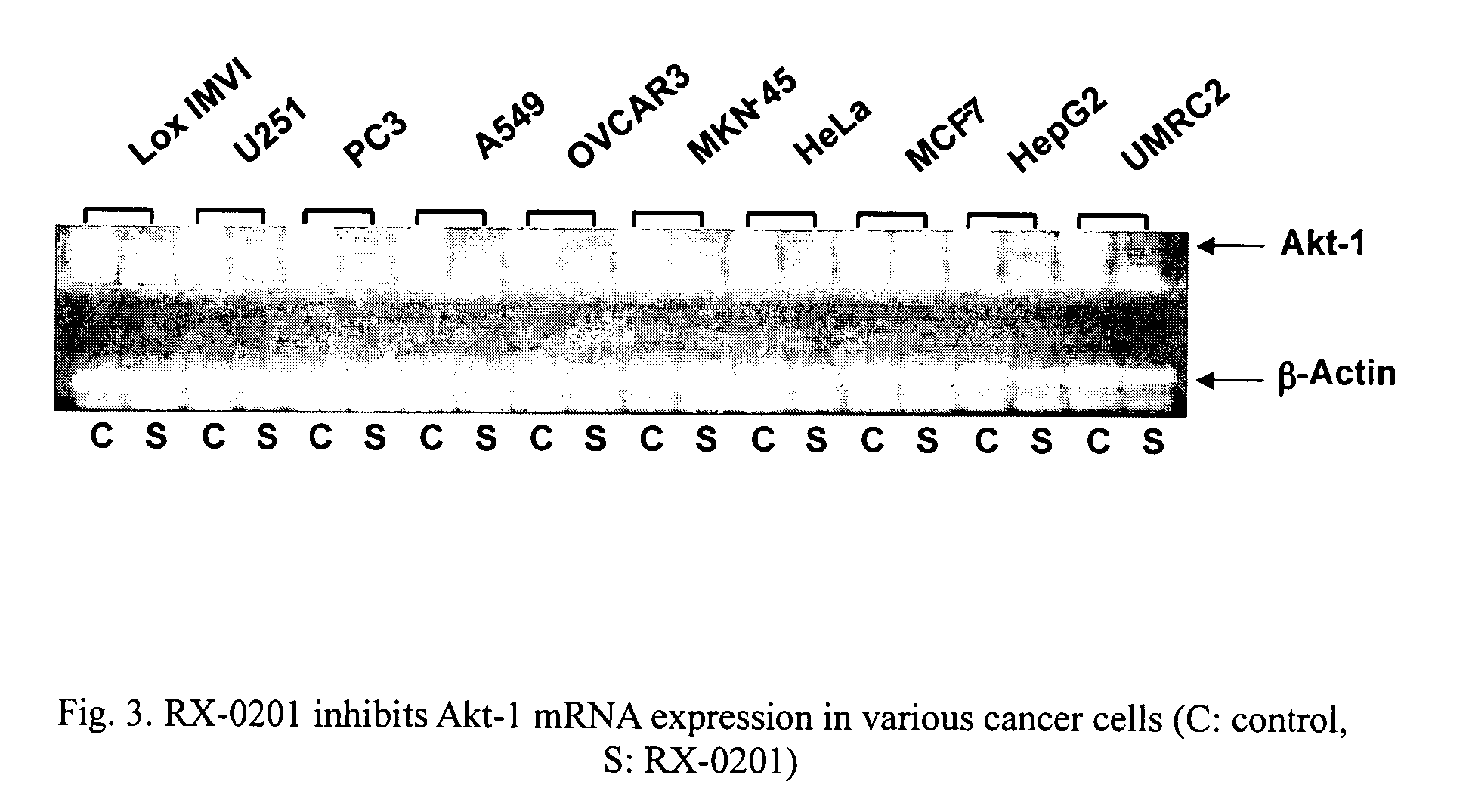Use of antisense oligonucleotides to inhibit the expression of human Akt-1
a technology of akt-1 and antisense oligonucleotides, which is applied in the direction of transferases, drug compositions, genetic material ingredients, etc., can solve the problems of unproven specificity, unrelated effects within animal cells, and multiple effects, so as to reduce cancer cell viability and modulate the expression of akt-1
- Summary
- Abstract
- Description
- Claims
- Application Information
AI Technical Summary
Benefits of technology
Problems solved by technology
Method used
Image
Examples
example 1
[0068]Cancer cells used to determine the effect of oligonucleotide compounds were obtained from the following sources: Human OVCAR-3 (ovary), MCF-7 (breast, hormone-dependent), HeLa (cervix), PC3 (prostate), HepG2 (liver), A549 (lung), Caki-1 (kidney), HT-29 (colon) and PANC-1 (pancreas) from the American Type Culture Collection (ATCC) (Manassas, Va.); U251 (brain) from Riken (Japan); MKN-45 (stomach) from DSMZ (Germany); UMRC2 (kidney) and Lox IMVI (melanoma) from the United States National Cancer Institute (Bethesda, Md.). All cell lines except UMRC2, Caki-1 and PANC-1 were grown in RPMI1640 medium (Invitrogen, Carlsbad, Calif.) supplemented with 10% fetal bovine serum (“FBS”), 1 mM sodium pyruvate, 10 mM HEPES and 100 U / ml penicillin and 100 μg / ml streptomycin (“P / S”). UMRC2, Caki-1 and PANC-1 cells were maintained in Dulbecco's modified Eagle's medium (“DMEM”, Invitrogen) supplemented with 10% FBS, P / S, 10 mM HEPES and 2 mM L-glutamine. All cells were ...
example 2
Synthesis of Oligonucleotides
[0069]Various nucleotide sequences found in the human Akt-1 gene coding region known as the open reading frame (“ORF”) and 3′ untranslated region (“3′ UTR”) were selected as targets, and the corresponding complementary oligonucleotides synthesized. The backbone of each oligonucleotide was modified during synthesis to introduce phosphorothioate linkages between nucleotides, except at the 3′ and 5′ ends, so that an antisense oligonucleotide resulted.
[0070]Oligonucleotides located in the coding region of Akt-1 were synthesized using 8909 Expedite DNA synthesizer from Applied Biosystems, Foster City, Calif. (“ABI”). The synthesis of phosphorothioates was conducted the same manner as for the corresponding phosphodiester oligonucleotides except the standard oxidation bottle was replaced by 0.2 M 3H-1,2-benzodithiole-3-one 1,1-dioxide in acetonitrile for the stepwise thiation of the phosphite linkages. After cleavage from the controlled pore glass column and de...
example 3
[0071]Lipofectamine PLUS reagent was used in transfection procedures for RNA and protein analysis. The day before transfection, cells were trypsinized, counted and plated. For 6 well-plate each well 2.5×105 cells of UMRC2 were plated so that they reach 50–90% confluency at the day of transfection. All the reagents and media used for transfection experiment were obtained from Invitrogen (Carlsbad, Calif.). The following solutions were prepared in sterile tubes: Solution A: for each transfection, a mixture of 2 μl (0.5 μg) DNA, 100 μl of serum free medium (“Opti-MEM”) and 3 μl PLUS reagent was incubated at room temperature for 15 minutes. Solution B: for each transfection, a mixture of 2.5 μl of Lipofectamine Reagent and 100 μl of serum free medium (Opti-MEM). Solutions A and B were combined and incubated at room temperature for 15 minutes. For transfection, cells were washed once with 2 ml of serum free medium (Opti-MEM) or PBS and 800 μl of serum free medium (Opti-MEM) w...
PUM
| Property | Measurement | Unit |
|---|---|---|
| pH | aaaaa | aaaaa |
| pH | aaaaa | aaaaa |
| time | aaaaa | aaaaa |
Abstract
Description
Claims
Application Information
 Login to View More
Login to View More - R&D
- Intellectual Property
- Life Sciences
- Materials
- Tech Scout
- Unparalleled Data Quality
- Higher Quality Content
- 60% Fewer Hallucinations
Browse by: Latest US Patents, China's latest patents, Technical Efficacy Thesaurus, Application Domain, Technology Topic, Popular Technical Reports.
© 2025 PatSnap. All rights reserved.Legal|Privacy policy|Modern Slavery Act Transparency Statement|Sitemap|About US| Contact US: help@patsnap.com



